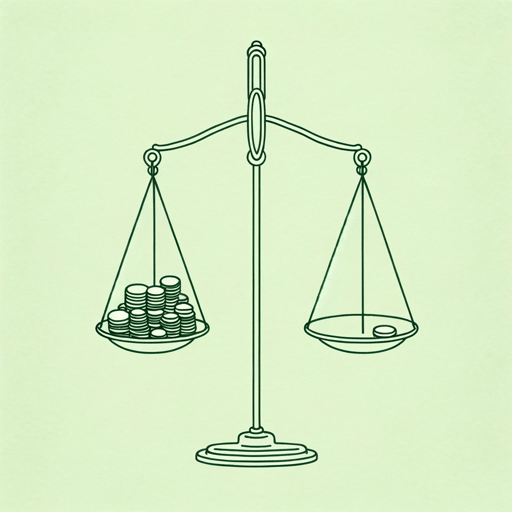56 pages • 1 hour read
Michael J. SandelWhat Money Can’t Buy: The Moral Limits of Markets
Nonfiction | Book | Adult | Published in 2012A modern alternative to SparkNotes and CliffsNotes, SuperSummary offers high-quality Study Guides with detailed chapter summaries and analysis of major themes, characters, and more.
Summary and Study Guide
Overview
What Money Can’t Buy: The Moral Limits of Markets (2012) is a work of nonfiction by Michael Sandel, examining and critiquing the moral corruption of societal institutions and values due to increasingly ingrained market values. Sandel suggests that market values, which center around the commodification of goods and services, have infringed upon nonmarket areas of life. He urges readers to consider if they want to belong to a society where everything is for sale, or whether there are some things that money should not be able to buy. Through this exploration, Sandel explores the themes of The Immorality of Over- Commodification, Free-Market Values and Social Inequality, and The Importance of Debate on Market Values.
This guide uses the 2012 Penguin Press Allen Lane e-book edition.
Summary
In his Introduction, Sandel mentions what he regards as the morally objectionable examples of things that can now be purchased, such as an individual’s skin for commercial tattoo advertisements, jail cell upgrades, and reading rewards for elementary-aged children. Sandel posits that market values have infiltrated into spheres where they do not belong, and that there needs to be a societal reexamination of the role of market values in our lives.
Sandel examines the increasing trust placed in free markets in the Western world since the 1980s. He points to the Global Financial Crisis of 2008, precipitated by a Wall Street Crash, as evidence of the fallibility of markets, suggesting that trust in the market’s ability to self-regulate was misplaced. Nevertheless, Sandel explains, the GFC did not cause a reexamination of market values. Instead, many movements, such as the Tea Party Movement, called for even greater deregulation, lowered taxes, the abolishment of Obamacare, and a holistic embracing of free-market values. Sandel critiques this movement for proposing the very approach that led to financial collapse in the first place. Sandel suggests that we need to engage in productive public discourse on what should and should not be for sale; he suggests that ubiquitous market values are corrupting society and increasing wealth inequality.
In Chapter 1, Sandel considers the implications of lines being replaced with markets. He argues that paying to skip the line, such as in airports, on highways, and in amusement parks, is inherently unfair. Furthermore, the replacement of lines with markets disproportionately disadvantages low socio-economic groups. This is particularly concerning in terms of the emergence of Concierge Medicine, where rich individuals can pay for luxury wait rooms and no wait times. Ticket scalping, a practice enabled by market values, allocates resources to those with the most money, Sandel suggests, rather than allocating goods to those who value them most (as economists who are proponents of free-market trading suggest).
In Chapter 2, Sandel examines cases of financial incentives. He suggests that incentives can’t be used as a quick fix for complex social problems, such as in the case of Barbara Harris’s sterilization incentive for addicted women: Treating social problems as economic problems inherently demeans the human subjects. Sandel also suggests that wealthy countries and individuals should not be able to pay their way out of environmental obligations through carbon trading and carbon footprint fees. Lastly, Sandel examines the emergence of markets in the hunting of endangered animals; he suggests that there is something inherently distasteful and inappropriate about raising money for conservation of a species through allowing rich hunters to buy permits to kill a select number.
In Chapter 3, Sandel explores the phenomenon of market values “crowding out” altruistic motivation, leading people away from doing the right thing. People stopped donating blood when it became a paid commodity, rather than donating more (as economical modeling favoring free markets might have suggested). Similarly, Swiss residents were less comfortable having a nuclear waste dump near their homes when they were paid for it, and Israeli parents were more likely to be late to pick up their children from daycare when a fine was introduced, as they treated it as a late fee. We should retain our societal processes that rely on civic duty, as this is a quality that expands, rather than depletes, through use.
In Chapter 4, Sandel explores the unsavory industries of death betting, life insurance, and death bonds. In terms of the corporate practice of janitor’s insurance, Sandel stresses that infiltration of market values into non-market spheres has a disproportionately disadvantageous impact on lower socio-economic groups. Sandel looks at the commercial interests riding on the deaths of other people, such as in the viaticals business (which boomed during the AIDS epidemic of the 1980s and 1990s) and death bonds.
In Chapter 5, Sandel examines the billion-dollar industry of sporting memorabilia. He suggests that this, as well as the corporate rebranding of stadiums and commentary language, has demeaned America’s sports. Sandel also criticizes the installation of luxury skyboxes, which introduces segregation into a space that was once egalitarian.
Sandel examines the renaming of other public spaces, such as subway stations, and the corporate branding appearing on beaches, on national parks, in schools, in jails, on police cars, and in courts. He suggests that these public spaces are demeaned by the infiltration of corporate branding and their associated market value connotations. Sandel argues that “some of the good things in life are corrupted or degraded if turned into commodities” (13).
Related Titles
By Michael J. Sandel



